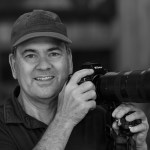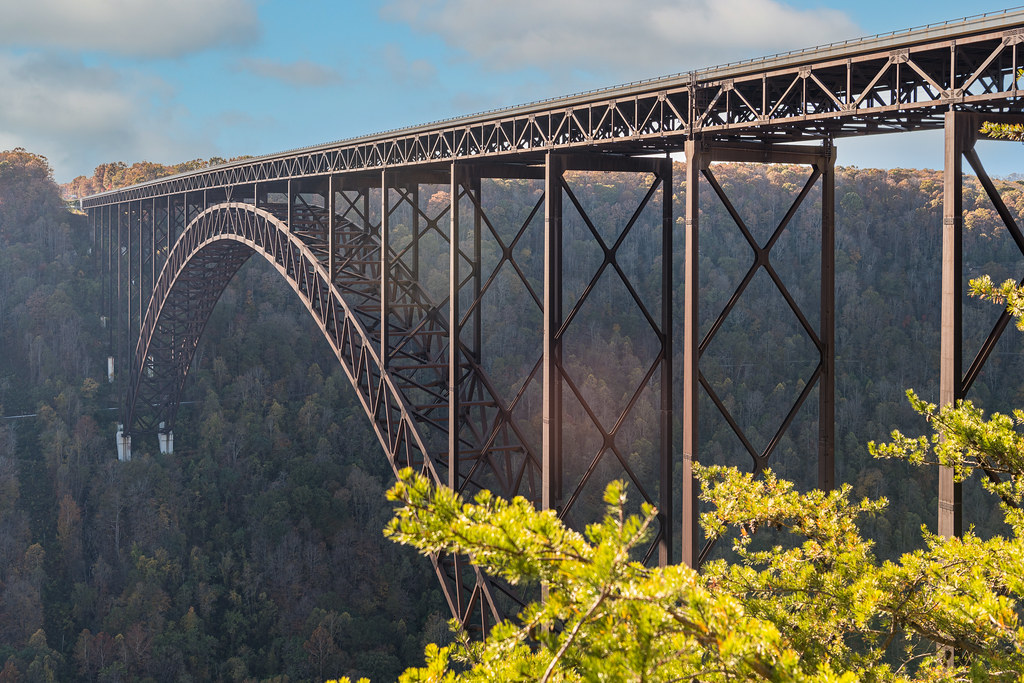
Don Sniegowski is an outdoor adventurer but also a reader and wanderer in search of inspiration in order to document life around him through his photography. Don’s been a Flickr member since 2004 and has enjoyed what Flickr has offered him, noting that, “Flickr has grown to be a wonderful social platform for serious photography." He's uploaded thousands of photos on Flickr, many with Creative Commons licenses in an effort to share the history and stories he's photographed along the way.
He says, “Whether I am reading about Ulysses S. Grant, Abraham Lincoln or Thomas Jefferson, I naturally want to wander and photograph where they once walked, which typically is a several-hour drive from my small town in Central Kentucky. Reading their history informs my photography and photographing historical spots informs my understanding of history.”
Diving into photography
Don’s parents instilled a love for the outdoors in him early on. Moving from Hawaii to South Florida where they owned and operated a local scuba shop, it’s no surprise that his first camera was an underwater Nikonos ll. Of those early days Don recalls, “I became interested in photography as I accompanied my parents underwater while they led scuba classes, guided scuba groups, spearfished and collected tropical fish. Back then I struggled with using an extension tube kit (with framing posts), a light meter in a floating plastic box and a big mesh goodie bag filled with buoyant underwater flashbulbs.”
While photography remained a constant presence in his life, Don remembers one specific moment in his photography journey that stands out. “A significant moment for me was when someone at the Smithsonian Institution called to ask if they could feature one of my photos, a U.S. flag on a neon Chinese restaurant sign, for an immigration exhibit at the Smithsonian’s National Museum of American History in Washington, DC. Although not the prettiest photo, its symbolism was significant. That call convinced me that I had a talent that needed to be fed.”
“National magazines have contacted me to request photographs that they had seen on Flickr. Some were even used as their cover page image. Newspapers, websites, and a book too. I have landscape photos on display in a U.S. park visitors center,” continues Don, as he reflects on some favorite milestones as a photographer.
Finding inspiration outdoors
We asked Don about his style of photography and he considers, “If I had to pick one I would say that my photography style is documentary, but journalism and travel closely follow. Frankly, my eclectic photography best defines me as jack of all trades, master of none. My photos are almost always about an outdoor story, such as a worker washing a store window, water eroding land, a muddied bird looking for breakfast or forgotten people whispering their secrets. I don’t think outdoor photos are considered a photography style, but if they were, outdoor photography would be my style. Barring that, I guess documentary style fits the bill.”
Don is inspired and influenced by bright and contrasting colors. “I love papaya green, tangerine orange, banana yellow and Pacific blue colors. Those hues are like catnip to me wherever I see them, no matter how mundane the scene. I also grew up around Japanese and Chinese art. Red. Gold. Black. Ah, the negative space of Taoist emptiness! They all swim in my head right next to John Huston and John Wayne’s horse.”
A location with a story
As for location, a look through Don’s Photostream will show that he covers a lot of diverse territory with photos frequently documenting the American south. For Don, sometimes the story of an image comes after he’s captured it but often, the story is what inspires him to seek out a specific location or subject. To that, he explains further, “I recently read that a particular township was quickly on its way to becoming America’s newest ghost town. It was only a state away. Besides reading about it, I wanted to see the place for myself to better understand the dynamics of how and why a once important township would disappear. I discover tactilely and kinetically through photography and my photography leads my head to want to research and photograph more.”
Gear on hand
With so much traveling and adventuring, we had to ask about Don’s preferred photo gear and he says, “I use a Nikon Z8 mirrorless interchangeable lens camera. Wanting to travel light when I walk about, I typically use a general purpose Nikkor 24-120mm f/4 S. I use a 500mm prime for wildlife. I use a wide Nikkor 14mm-30mm f/4 S for arches and waterfalls and I favor the Z 50mm f/1.8 to capture street photographs in big cities. My biggest challenge was to adjust the countless customizable settings on my new mirrorless camera to my liking. After I spent hours customizing its settings, that camera shifted from being frustratingly Nikon’s to wonderfully Don’s. I love customizable function buttons and rings. My camera is now a comfortable extension of my specific photography needs and quirks.”
“I admire photographers who can simultaneously switch from one camera brand to another, or even one model in a brand to another”, Don continues. “It takes time to learn a camera. If I have two different models of a camera brand, I don’t want to cogitate about how to operate the one least used when I have to capture the decisive moment of a scene.”
Preserving the past
We asked Don about some of his favorites shots and if he could share the story behind one of them. He chose a photo he’d captured of the last remaining building in Sleettown, (Perryville, KY), a town that former Kentucky slaves built after the Civil War. As with much of his work, he was inspired by the history and people tied to this location.
“This photo hits me emotionally. The tree that looks like it’s howling was symbolic to me of enslaved brothers who howled from the beginning for freedom. As the Civil War’s Battle of Perryville raged around their owner’s yard, young Preston Sleet ran to the cause of the Union, even before Lincoln’s Emancipation Proclamation. He likely joined as first a laborer and then eventually as a fighter, to do what he could to bring down slavery and the Confederacy. From their lineage came Anne Sleet, the first African-American woman mayor of Perryville, Kentucky in 2007, a small town that is 93 percent white. There is also Moneta Sleet, a family member who would rise to win the Pulitzer Prize in photography for his national documentation of the Civil Rights Movement and Martin Luther King Jr.’s efforts. We Americans have been the beneficiaries of Preston and Henry Sleet’s lineage and labor in fighting for a fairer society. That is what I think of when I see this building and that howling tree. My hope is that the free town of Sleettown and what it symbolizes are remembered.”
As for capturing the moment and emotion in this image Don describes, “I wasn’t just looking at an abandoned building in the middle of nowhere. I researched the location’s history. Once there, I saw what I was looking for in this scene. It was really about getting the right angle at the right depth of field. The tone was added in Adobe Lightroom during the editing process.”
Finding a place in the Commons
Don is an avid user of the Creative Commons license which we are passionate about at Flickr. Creative Commons licenses (CC) allow the photographer the ability to retain control over their images and gives them more choices as to how those images can be used, allowing broader access of historically and culturally significant photos to the general public. When asked about why he uses these licenses so frequently Don explains,”In the early days of Flickr, there was a strong movement on the World Wide Web of freely shared open sources. A savvy programmer would first get to know a particular open-source platform, figure out where they could contribute and then make their contributions. That would improve their skills and help them be known among programmers. That seemed like a good formula for a photographer too.”
Don continues, “I also watched how Flickr member Thomas Hawk had his wonderfully wide-ranging collection of fantastic photographs licensed via Creative Commons. What Hawk does carries considerable weight with me. Using the Creative Commons license also has to do with legacy. That intellectual property license was a way to have my name more widely recognized through letting my works be more easily used than a more traditional and restrictive copyright license. Creative Commons also saves me time. Would-be users can see my intent in the licensing. A license for noncommercial use via Creative Commons also allows me to protect my monetary commercial gains if an enterprise wants to print my photographs in magazines, museums or books.”
Don loves photography but he also loves hiking, reading, movies and was formerly, an avid scuba diver. Although scuba diving opportunities are limited due to his current location, Don says, “I scuba dive by proxy through the terrific works of underwater photographers such as Todd Aki, François Libert and others that photograph remote wonders of the underwater world that even legacy dive magazines have not traditionally covered.”
A place in the Flickr community
Don has been a Flickr member since the very early days. We asked him what keeps him coming back to Flickr after all these years. “What is not to love?,” Don asks, “I owe much of my growth as a photographer to the Flickr community. I live in a small town in rural Kentucky but I am instantly linked to the world of photographs, thanks to Flickr. There is such a wide variety of great photographers here in comparison to other sites. There are wonderfully creative photographers from Japan on Flickr that post leading-edge photography, such as street photographer AJPSCS. He hooked me years ago through his stunning street portraits of Harajuku gothic faces. I loved his whimsical tiny world image, The Hole, as well as many of his other creative street photos of Tokyo.”
Don continues, “Not long after I read about artificial intelligence generation services being used by photographers, I saw Flickr member Andrew Tan posting an unbelievable AI-generated kingfisher. I recently saw Frank van Dongen’s images on Flickr. He seems to be using AI to create cinematic styles. So that is a way that AI generation can be used. Thank you, Flickr members!”
“Flickr built a platform that enables my photos to have just the right pop rather than dumbing them down to be appropriate only for small, smartphone-screen viewing. In Flickr, I do not have to scroll through annoying ads and disguised spam to see the works of photographers that I follow. I also appreciate that I can upload my photos on Flickr in jpg form so they will not be lost. Although I take photos in RAW, I now have uploaded over 250,000 of those images in jpg format on Flickr. No losses. Over 10,000 of those images have been publicly published here. They’ve had over 10 million views.”
We are so lucky to have Don’s images and stories shared here on Flickr. We hope you’ll take some time to scroll through Don’s Flickr site and enjoy the history and stories behind his photos.
Not a Flickr member yet? Sign up today to join our community of photographers and find your inspiration.
profile photo credit: Bobby Shiflet
























